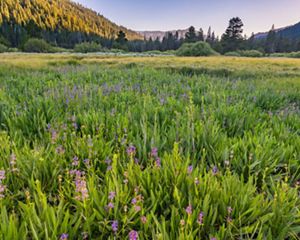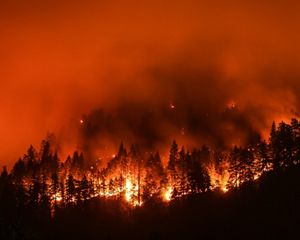Description
The sublime landscapes of California’s Mojave Desert—its extreme peaks and valleys, monumental vistas and immense star-filled skies—beguile visitors with their otherworldly solitude. You may think the seemingly infinite desert is empty, but it’s actually teeming with activity and inhabitants.
The Mojave shelters a huge range of plants and animals. Simultaneously, its 20 million acres offer up a multitude of opportunities—from recreation to ranching, from mining to military training—for people.
Iconic, immense and rich, the Mojave Desert’s natural benefits support life in California in so many ways. They are, however, both finite and fragile.
Through prudent planning, we can ensure that the Mojave’s ample resources sustain people while preserving the Mojave’s irreplaceable and diverse plants and animals. Our goal is to encourage the development of clean energy, which is vital to California's future, while protecting the desert’s unique landscapes and ecology.
Paramount to People
The Mojave has long been an invaluable resource for people, and—as its human populations continue to grow—its importance can only increase.
Miners, ranchers and farmers all depend on the desert for their livelihoods. With every branch of the military maintaining an installation in the desert, the Mojave is a critical training location for the U.S. Department of Defense.
Visitors to the Mojave’s three national parks—Death Valley National Park, Joshua Tree National Park and Mojave National Preserve—can encounter hundreds of species of native and migratory birds as well as a spectacular array of plants, including wondrously colorful blooms that carpet the desert floor in spring. And the film industry makes frequent use of the region’s spectacular scenery, which has starred in a number of major motion pictures.
Success in Site
The desert is also playing a leading role in California’s ambitious renewable energy goals. Wind and solar energy installations are becoming an increasingly common sight in the desert. While those projects make important contributions to California’s climate change objectives, they need to be pursued in places and ways that will allow California’s natural habitats to continue thriving.
The stakes are high for the Mojave’s wildlife. Throughout the desert, underground rivers surface into a series of lush oases that support an extraordinary spectrum of life. Aquatic species existing nowhere else—such as the Devil’s Hole pupfish—share the desert’s resources with bighorn sheep, mountain lions, black-tailed jackrabbits and desert tortoises.
Designs on a Sustainable Future
TNC’s Development by Design brings together everyone who depends on the region’s resources in order to ensure a permanent and amicable solution to the desert’s environmental and energy needs. By using TNC’s extensive scientific knowledge of the region, we can guide the development process and inform mitigation strategies to make the Mojave a healthier place.
Meanwhile we continue our conservation efforts on the ground, protecting, for example, the Amargosa River, where more than 100 species are targeted for conservation. In addition, our study of the ability of desert species to adapt to the heat and aridity of the desert advances our work with other species facing the increasing effects of climate change.



